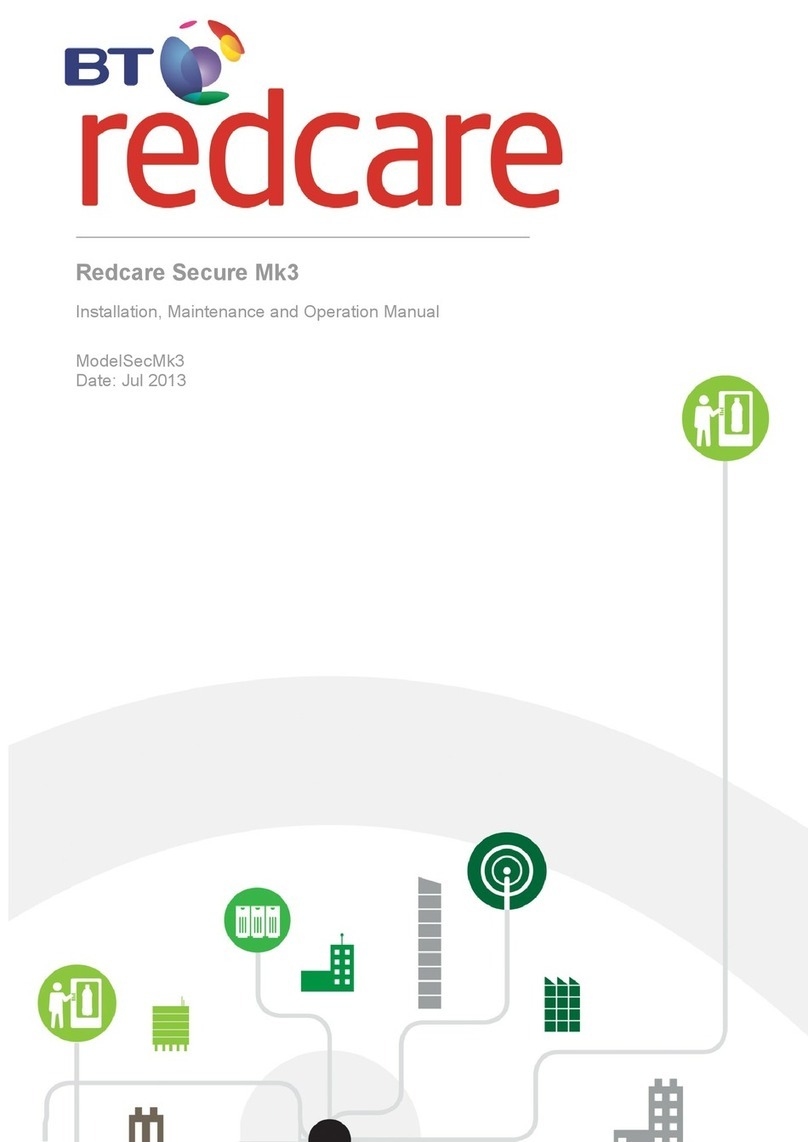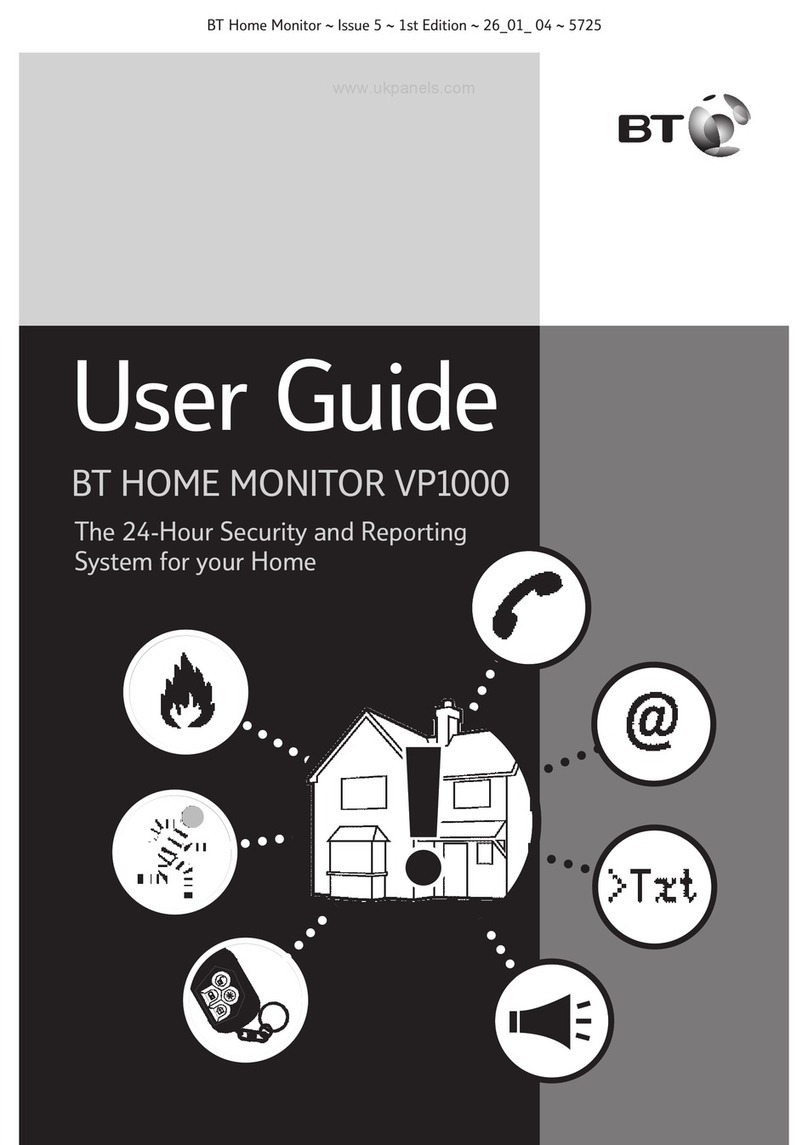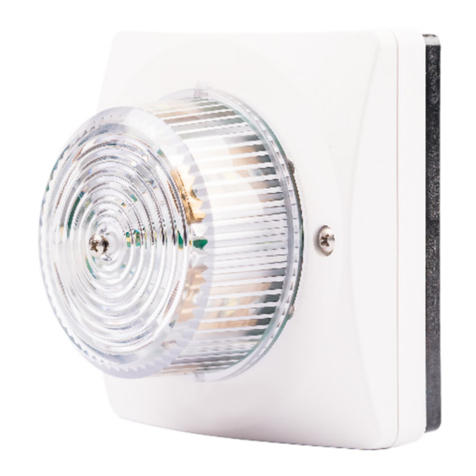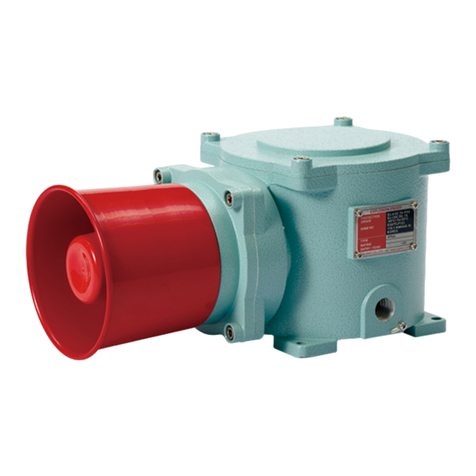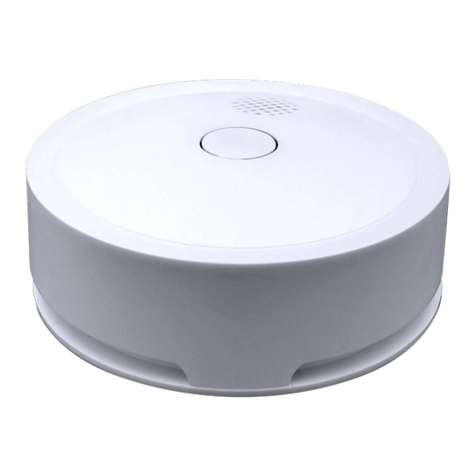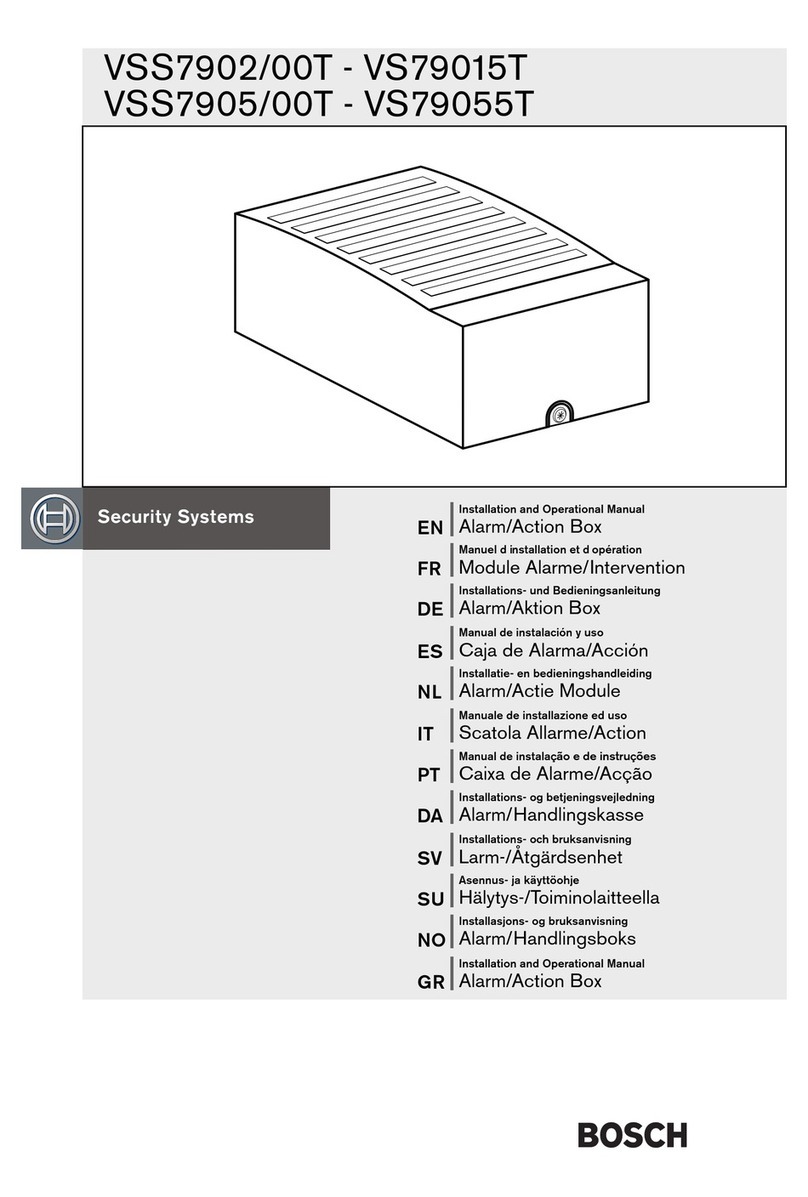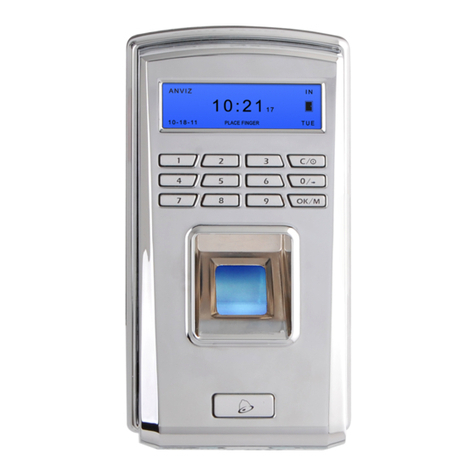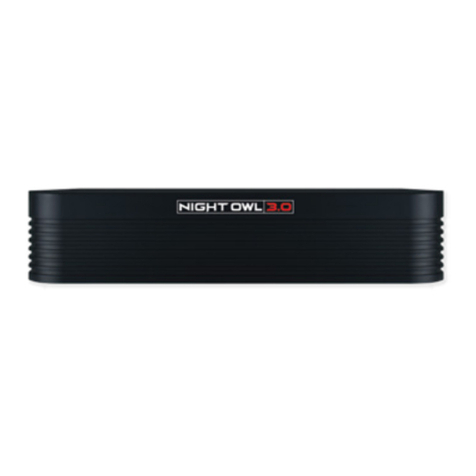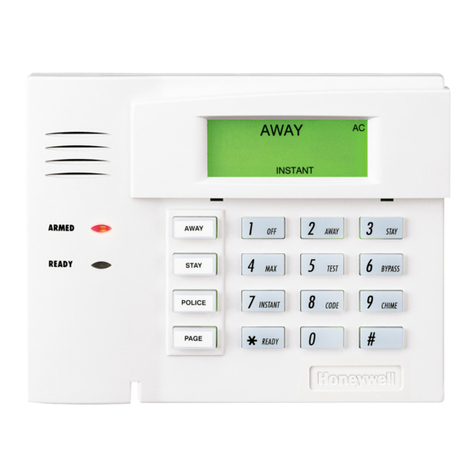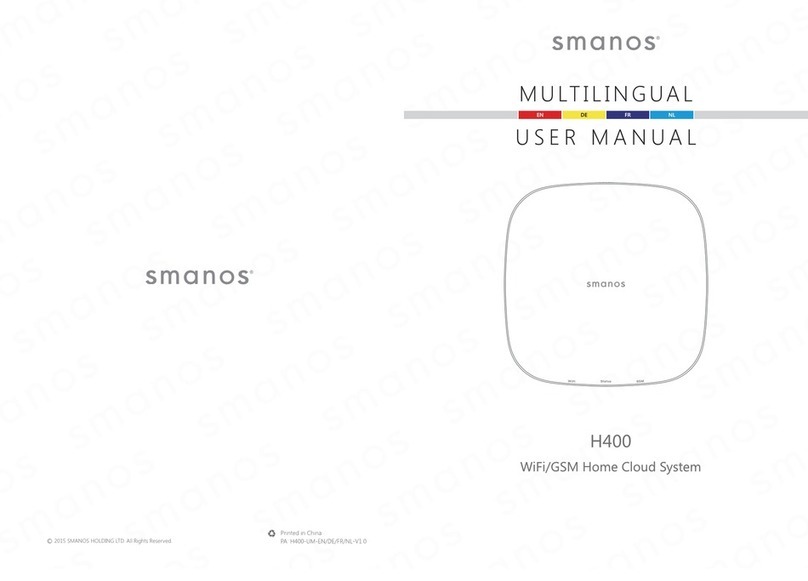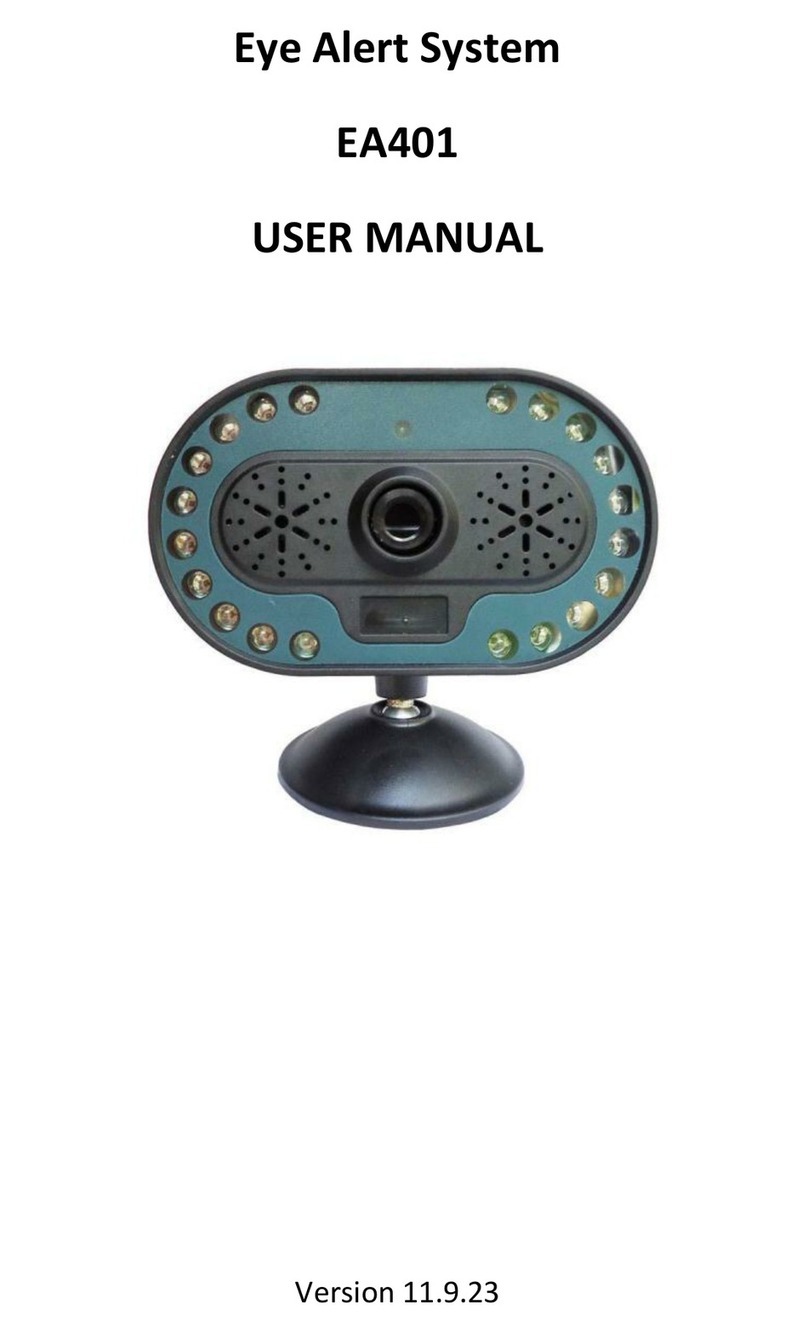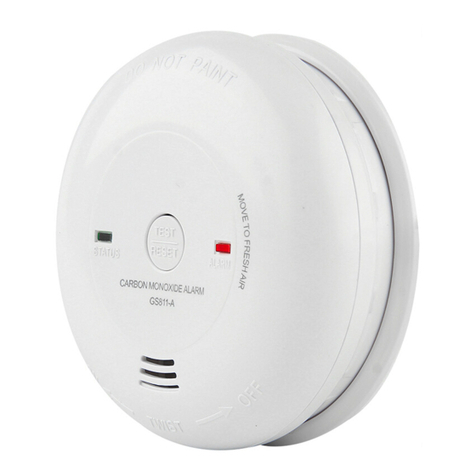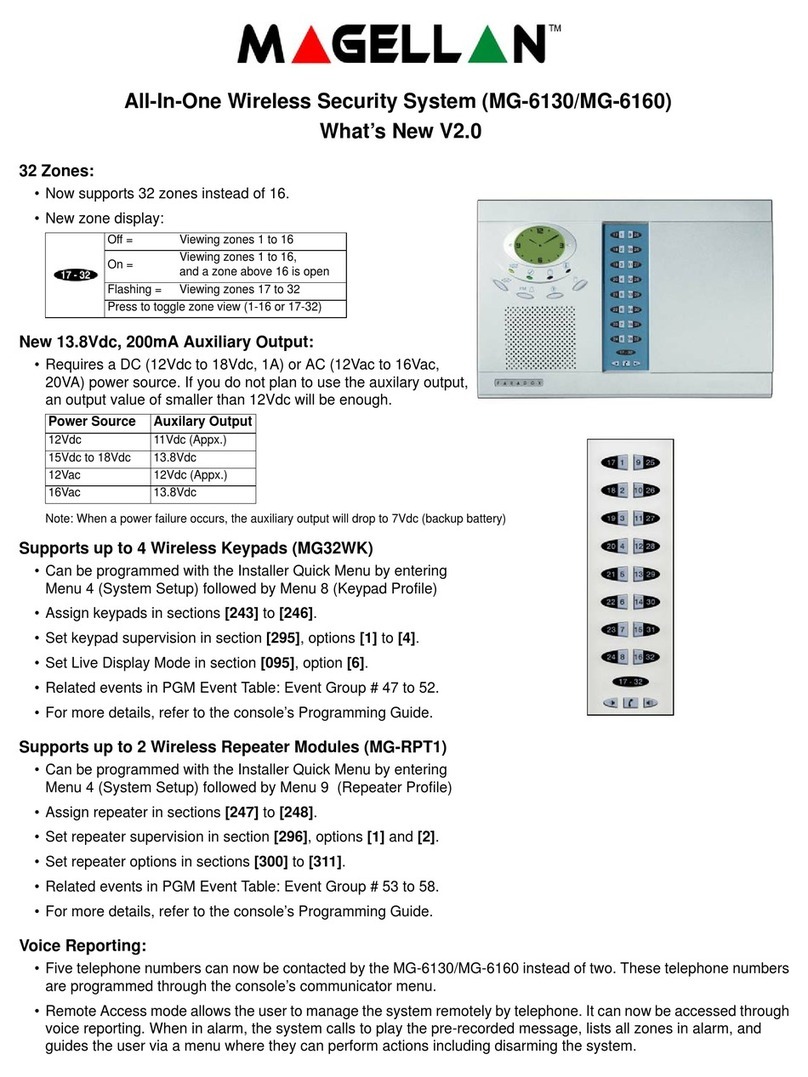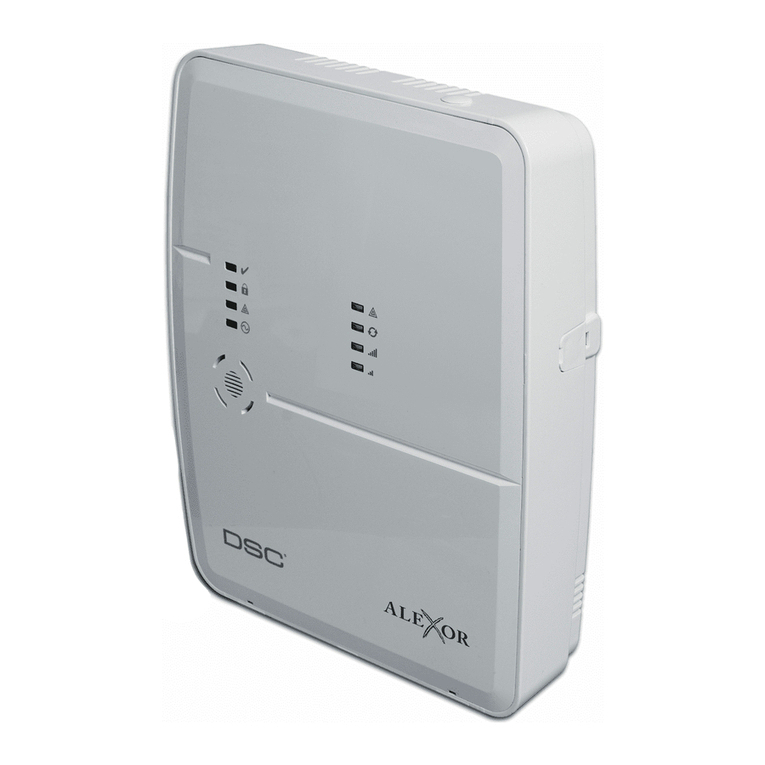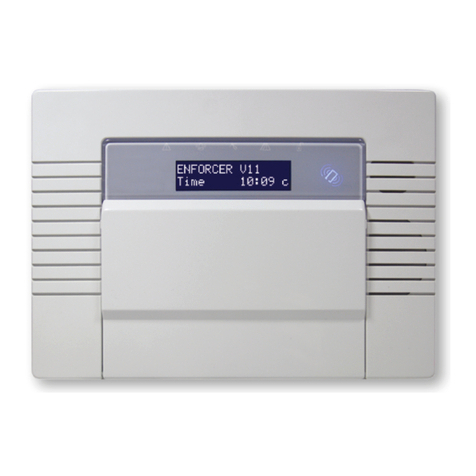BT UC-351GP/E-UK User manual

Redcare Secure
Installation, Maintenance and Operation Manual
Model UC-351GP/E-UK

Page 1 of 40
Installation, Maintenance and Operation Manual V24a (June 2012) British Telecommunications plc 2012
Table of Contents
INTRODUCTION .................................................................2
PARTS LIST ........................................................................ 4
SAFETY WARNINGS AND OPERATING CONDITIONS.....5
MOUNTING AND WIRING ..................................................7
PIN POLARITY LEARNING.................................................13
CONFIGURING THE REDCARE SECURE UNIT................14
NETWORK REGISTRATION AND COMMISSIONING........21
MAINTENANCE AND OPERATIONS..................................28
SUPPORT CONTACT DETAILS .........................................29
APPENDIX A
INSTALLATION CHECKLIST ..............................................30
APPENDIX B
REDCARE SECURE UNIT GENERATED EVENTS............31
APPENDIX C
TROUBLE SHOOTING........................................................33
APPENDIX D
DTMF CONFIGURATION CODES ...................................... 34
APPENDIX E
SECURE IP (GRADE 4 ONLY) SPECIFICATION NOTES .. 36
APPENDIX F
DISPOSAL...........................................................................37
APPENDIX G
ABBREVIATIONS................................................................38
APPENDIX H
REGULATORY APPROVALS .............................................39

Page 2 of 40
Installation, Maintenance and Operation Manual V24a (June 2012) British Telecommunications plc 2012
1 | Introduction
Figure 1 –Redcare Secure Security Communicator
The Redcare Secure unit is a multi-function security communicator from BT Redcare. It combines:
Alarm panel dial capture unit (SIA, ContactID, FastFormat)
-IMPORTANT NOTE: If intending to use dial capture, please confirm beforehand with
your ARC that their automation software is capable of differentiating correctly
between PIN alarms (Secure or Redcare Platform generated alarms) and alarm panel
generated ZONE alarms via Dial Capture. See Appendix B for more details.
Cellular (GSM-GPRS) modem
0800 PSTN (IP) uplink
Ethernet (IP) uplink
General-purpose alarm and status inputs and outputs
Typical applications include:
Commercial / Residential alarm systems (Signalling grades 2, 3 or 4)
Fire alarm systems
Consumer alarm systems that require dual path delivery
The Redcare Secure unit can be used in any one of the following configurations.
Secure 2 Grade 2 - Primary path GPRS, Secondary path PSTN (Voltage monitored with 504
hour heartbeat, 24 hour PSTN call on GPRS Fail)
Secure 3 Grade 3 - Primary path GPRS, Secondary path PSTN (Voltage monitored with 504
hour heartbeat, 4 hour PSTN call on GPRS Fail)
Secure IP Grade 4 - Primary path IP, secondary path GPRS
GPRS
Ethernet or PSTN
GPRS
Redcare Secure unit

Page 3 of 40
Installation, Maintenance and Operation Manual V24a (June 2012) British Telecommunications plc 2012
PRODUCT
SECURE 2
SECURE 3
SECURE IP
Both paths working, PSTN/IP path fails –fault reported in
2 MINS
2 MINS
3 MINS
Both paths working, Radio path fails –fault reported in
5-55 MINS
5-55 MINS
3-13 MINS
Only Radio path working and it fails –fault reported in
55 MINS
55 MINS
3-6 MINS
Only PSTN/IP path working and it fails –fault reported in
25 HOURS
5 HOURS
3 MINS
If both paths failed simultaneously –fault reported in
55 MINS
55 MINS
6 MINS
Primary Polling Frequency
5 MINS
5 MINS
30 SECS
EN GRADE
2
3
4
ATS VALUE PRIMARY
ATS4
ATS4
ATS5
ATS VALUE SECONDARY
ATS3
ATS4
ATS4
Figure 2 - Polling rates and communication fail alarm transmission times
Note: The polling rates and communication fail alarm transmission times in Fig 2 may be liable to
change. For the latest information, refer to the Technical information sheet at
http://www.redcare.bt.com
Note: Where the Redcare Secure unit is connected to a PSTN line (Secure 2 & 3) then the line
should be either a dedicated line, or a line of low usage, to ensure that the necessary outgoing test
calls and alarm calls can be made when required.

Page 4 of 40
Installation, Maintenance and Operation Manual V24a (June 2012) British Telecommunications plc 2012
2 | Parts List
The Redcare Secure Unit is shipped with the following items:
Redcare Secure unit
Adhesive pads
Antenna
SIM card (fitted)
The following are required in order to complete the Redcare Secure installation:
General hand tools (2mm blade screwdriver, wire cutters, etc.)
Connection cable
ADSL filter (Secure 2 & 3 only) for PSTN broadband lines

Page 5 of 40
Installation, Maintenance and Operation Manual V24a (June 2012) British Telecommunications plc 2012
3 | Safety Warnings and Operating Conditions
Qualified Personnel Only
Only qualified service personnel should install, and perform subsequent maintenance on the
Redcare Secure Unit.
Battery Handling
Take care not to short the battery in the host alarm system. A short-circuited battery can deliver
large currents that could result in serious burns or create a fire hazard. Dispose of used batteries
according to local environmental regulations.
Power Requirements
Voltage: 9VDC to 30VDC *
Current: @ 13.8V:
Pin only mode 230mA quiescent, 280mA peak alarm transmission.
Dial capture mode (SIA / CID / FF) 270mA quiescent, 450mA peak alarm transmission.
Current: @ 24V = 170mA
Ripple/noise: 200mVpp max.
Low battery threshold: 10.2V +/- 0.5V.
* The Secure unit can be used with 24V volt systems, i.e. Fire Alarm panels, but be aware
that the low voltage threshold alarm is fixed at 10.2V.
Pin Alarm Inputs
Logic High = +3.5V to +30V
Logic Low = -0.5V to +0.8V
General Purpose Outputs: (on J1400)
Logic High = 12V (nominal) @ 1mA max
Logic Low = 0.4V @ 200mA max
These voltages are with respect to the 0V terminal on the Power Connector J800.
Physical Dimensions
Size = 168 x 115 x 36 mm
Mass = 500 g

Page 6 of 40
Installation, Maintenance and Operation Manual V24a (June 2012) British Telecommunications plc 2012
SELV Connectors
Connectors J1300, J1301 (pin inputs) J1400 (outputs), J1000 (alarm panel), J600 (Ethernet) and J
800 (DC power) have been classified as SELV and must only be connected to approved SELV
circuits. If the circuit to be connected to these terminals is not SELV an isolation unit compliant with
local market regulatory requirements must be used. SELV circuits are determined in IEC60950 and
equivalent national standards.
Operating Conditions
The Redcare Secure unit is rated to operate under the following conditions:
-Indoor operation
-Ambient temperature: -5oC (23oF) to +55oC (131oF)
-Humidity: 5% to 95%
Note: It is recommended to use a power supply capable of providing at least 450mA at
13.8VDC for this product.

Page 7 of 40
Installation, Maintenance and Operation Manual V24a (June 2012) British Telecommunications plc 2012
4 | Mounting and Wiring
Figure 3 - Redcare Secure unit connections
Redcare Secure LED functions:
Power - Supply voltage indicator
Wireline - Wireline (PSTN or Ethernet) status indicator
Wireless - GPRS status indicator
SS1, SS2 - Wireless Signal Strength indicators
Security - 1 blink = new input event detected
Ethernet - Data present on RJ45

Page 8 of 40
Installation, Maintenance and Operation Manual V24a (June 2012) British Telecommunications plc 2012
Selecting the Mounting Location
When surveying the site, please remember that the Redcare Secure unit operates in a similar way to
an ordinary mobile telephone. Therefore any restrictions on the use of mobile telephones in the area
will also apply to the Redcare Secure unit.
Premises such as hospitals, petrol stations, airports, blasting areas etc. may operate a mobile
telephone restriction in certain areas. Always ensure that the chosen site is free of any mobile
telephone restrictions and advise the end user so that they are aware, should any restrictions come
into force in the future.
If possible, perform a signal strength test during a pre-installation site visit. To perform a GSM signal
strength test:
1. Determine where the Redcare Secure unit will be situated
2. Place the test mobile phone where the Redcare Secure unit is to be installed, Switch it on
and observe the signal strength from the appropriate mobile network.
If the signal strength is weak, try to find a better position for the Redcare Secure unit. If required,
extension antennas and extension cables are available. Please contact 08702 400503 for further
advice.
Install away from any other Radio sources. Keep at least a 3 metre separation.
Mounting the Redcare Secure unit
Important: Ensure the alarm system is powered down (switch off mains and disconnect the
battery) before installation can commence.
Ensure that the base of the Redcare Secure unit is free from dust or grease. Use the supplied
double sided mounting pads to fit the Redcare Secure unit onto a clean, flat surface within the host
enclosure, or in its own tamper-protected box.
PSTN connection (Secure 2 & Secure 3 / Grade 2 & 3 only)
Connect 2 wires A & B from a suitable PSTN telephone line to J400. Line polarity is not important.
Ethernet Connection. (Secure IP / Grade 4 only)
Run an Ethernet cable from a convenient network connection to the Redcare Secure unit’s Ethernet
connector, J600.
The Ethernet port auto-senses, so that either a straight-through or cross-over Ethernet cable can be
used.
Only ready-made, certified cables should be used when connecting the Redcare Secure unit to
network equipment. If cabling has to be made on site then testing and certification to EN 50173
Class D should be performed. Failure to use certified network cabling can lead to intermittent and
spurious faults that are difficult to trace without specialist equipment.

Page 9 of 40
Installation, Maintenance and Operation Manual V24a (June 2012) British Telecommunications plc 2012
Figure 4 - J600 Ethernet connection
Power Connection
Ensure power is off when cabling the power connectors.
The power connection is via terminal J800.
Connect the +12V or +24V to the terminal labelled + of J800, and 0V to the terminal labelled 0V of
J800.
Figure 5 - J800 power connection
The power wiring must be less than 3m in length and use wires having core areas of at least
0.5mm2.
Tamper
If an additional tamper connection is required, connect the tamper switch to GPIP 12.
Antenna
The antenna provided is a flat type and must be mounted indoors, on a flat horizontal surface,
sufficiently close that it can be connected to the Redcare Secure unit. The antenna is self-adhesive
and will bond firmly to any clean, dry and flat surface. Make a suitable hole, (typically 11mm
diameter) in the top of the box in which the Redcare Secure unit is fitted. Prevent swarf from
entering the enclosure as it could cause internal short circuits.
Remove any burrs from the hole, pass the RF cable through it and place the antenna in position.
Do not permanently fix the antenna until a Signal Strength Test has been performed.

Page 10 of 40
Installation, Maintenance and Operation Manual V24a (June 2012) British Telecommunications plc 2012
Figure 6 - Antenna position
Extension Antenna
An extension antenna can be used in the event that the Receive Signal strength at the location is
inadequate, and changing locations is not an option. Two high gain antennas are available:
1. Aerial (short) –AO100 External base antenna
2. Aerial (long) –BA900-5 High gain antenna (1.2m white stick)
Each antenna is supplied with a 5 m RG 58 coaxial cable terminated by a female FME connector. A
20 cm male FME to male MMCX flying lead is used to terminate the antenna on the Redcare Secure
unit GSM module.
A 10 m low-loss URM 76 coaxial cable is available should the cable run to the antenna need to be
extended. This cable is equipped with a male FME connector at one end and a female at the other.
Alarm Panel Connection –Pins
To interface to a panel with pin alarms, connect the alarm panel outputs to the alarm input terminals
on J1300 and J1301.
Figure 7 - General Purpose Input Pins
Unused input terminals can be left unconnected.

Page 11 of 40
Installation, Maintenance and Operation Manual V24a (June 2012) British Telecommunications plc 2012
The following General Purpose inputs (GPIP’s) have specific purposes:
GPIP4
Will raise a Pin 4 alarm and trigger the RPS function on output pin 3.
GPIP11
When configured for BSIA Form 175 functionality, activates a response on output 1
(GPOP1) to interrogate local path fault, or raises a BSIA Form 175 Test alarm over
each signalling path.
GPIP12
Will raise a Pin 12 alarm for general use. Typically mapped as a tamper alarm at ARC.
GPIP13
Dedicated for AC fail indication, will raise a Pin 13 alarm after a delay of 7 minutes.
Alarm Panel Connection –Dial Capture
To use dial-capture, connect the alarm panels digicom line connectors to the Redcare Secure’s
Alarm Panel interface J1000.
Pins 1, 2 - Alarm Panel In
Pins 3, 4 - Unused
Pins 5, 6 - Unused
The diagram below shows the alarm panel connection.
Figure 8 - J1000 Alarm Panel connection
Note: When using the alarm panel interface port to connect to the Redcare Secure unit, there
will be a delay between the alarm panel activating the dialler notification output and the
Redcare Secure sending the message to the ARC. The length of the delay may be up to 20
seconds and varies depending on the make and model of the alarm panel. Also, if the panel
goes off-hook but fails to dial within 10 seconds, a “Panel Dial fail” alarm will be sent.
General Purpose Outputs (GPOP’s)
Three General Purpose outputs are provided. The outputs are open collector outputs (with 12V pull-
up). The outputs are rated to 30V. The outputs are wired to J1400 as shown.
Figure 9 - J1400 General Purpose Output Pins

Page 12 of 40
Installation, Maintenance and Operation Manual V24a (June 2012) British Telecommunications plc 2012
By default, the General Purpose outputs (GPOP’s) have the following specific purposes:
GPOP1: Local path fault output (BSIA Form 175 mode)
GPOP2: ARC controlled output
GPOP3: Return path signalling (RPS) output (in conjunction with input pin 4)
WARNING
Connectors J600, J800, J1000, J1300, J1301 and J1400 have been classified as SELV and
shall only be connected to approved SELV circuits. If the circuit to be connected to these
terminals is not SELV, a regulatory authority compliant isolation unit must be used. SELV
circuits are determined in IEC60950.
For basic installations the wiring of GPOP’s is not required.
Where local comms fail reporting is required in compliance with BSIA form 175 then make the following
connections.

Page 13 of 40
Installation, Maintenance and Operation Manual V24a (June 2012) British Telecommunications plc 2012
5 | Pin Polarity Learning
The Redcare Secure unit can be forced to learn the polarity of the pin alarm inputs as follows.
1. Short out the Learn header J902 with a link.
2. Power up or power-cycle the unit.
3. Wait around 15 seconds until the LED’s flash in the “learn ready” pattern (left to right scrolling
pattern).
4. Connect all 16 pin inputs in the Normal state (including input 4 as closed state).
Note: If pin 12 is used for Tamper it must also be connected in its normal (closed) state, even
though the enclosure may actually be open
5. Remove the header from J902. The unit will briefly flash all LED’s off-on-off to indicate learning
has completed and will store this information in non-volatile memory.
The boot sequence will then continue.
Note: If the polarity of a pin (or pins) needs to be changed, the above procedure should be
repeated, with the relevant pins connected in the Altered State at stage 4.

Page 14 of 40
Installation, Maintenance and Operation Manual V24a (June 2012) British Telecommunications plc 2012
6 | Configuring the Redcare Secure unit
The unit is supplied pre-configured for pin only input mode and PSTN working. (Secure 2 /
Secure 3)
For most installations no further configuration will be required.
For alternative installation requirements the following configuration options are available.
There are two methods available to configure the unit. It can be configured with either a DTMF
phone or through a web console on a PC internet browser.
Configuration Method 1. Configuring with a DTMF Phone
1. Prepare wiring as described in Section 0.
2. For initial power-up and configuration, the following minimum connections are required:
a. DC Power
b. Antenna (for wireless operation)
3 Connect a DTMF phone to the units’s alarm panel port J1000. An adapter is available from
Redcare. See fig 10
4 Short out the Config header J903 with a link.
5 Power up or power-cycle the unit.
6 Around 15 seconds after power on, the six rightmost LED’s will flash providing a period of 20
seconds to lift the telephone receiver, receive dial tone and press the '#' key to enter
configuration Mode.
Note: Configuration Mode is terminated after five minutes, or when the installer hangs-up the
DTMF phone.
Note: If the Config header is left shorted once configuration mode is completed the unit will
not dialup or communicate at all.
Figure 10 –Adapter to connect a DTMF telephone to J1000 for configuration.

Page 15 of 40
Installation, Maintenance and Operation Manual V24a (June 2012) British Telecommunications plc 2012
Configuring Panel Format
By default the unit is configured for pin-only mode. This mode disables the dial capture port to
reduce power consumption. Use the following command to enable the dial capture port and set it to
receive the relevant panel format where dial capture is required. Note Pins can still be reported in
any of these other modes.
To change the panel format, use the * 15 * option:
* 15 * 1 # ContactID
* 15 * 10 # High Speed (fast format)
* 15 * 20 # SIA
* 15 * 30 # Pin Only mode - default
The Redcare Secure unit supports several other less common formats listed below:
* 15 * 2 # ContactID with Double Knock
* 15 * 3 # 4 + 1 express (DTMF mode only)
* 15 * 5 # 4 + 2 express (DTMF mode only)
* 15 * 11 # High Speed with Double Knock
* 15 * 21 # SIA with V21 tones
If no more parameters are to be configured, remove the header from J903 and disconnect the DTMF
phone.
Configuring General Purpose Outputs
By default, the Redcare Secure unit’s General Purpose Outputs (GPOP’s) operate as follows:
Output
Default Function
Default Polarity
GPOP1
Local path fail output
High to indicate either path
failure. (BSIA 175 mode)
GPOP2
Remotely (ARC) Controlled
0 from ARC sets output High, 1
from ARC sets output Low
GPOP3
RPS function (in conjunction with input pin 4)
Alarm sent sets output High,
Alarm ack’d sets output Low
Figure 11 - General Purpose Output Pin operations

Page 16 of 40
Installation, Maintenance and Operation Manual V24a (June 2012) British Telecommunications plc 2012
The following commands can be used to configure the behaviour of the GP Outputs:
GPOP1
* 91 * 20 BSIA Form 175 Mode –default mode
* 91 * 30 Standard Path Fail Mode Active Low (Failure of any communications path causes a
Low on GPOP1)
* 91 * 31 Standard Path Fail Mode Active High (Failure of any communications path causes a
High on GPOP1)
* 91 * 50 Standard Path Fail Mode 2 Active Low (Failure of both communications paths causes a
Low on GPOP1)
* 91 * 51 Standard Path Fail Mode 2 Active High (Failure of both communications paths causes
a High on GPOP1)
GPOP2
* 92 * 10 Remotely (ARC) Controlled Active Low (0 from ARC sets output High, 1 from ARC sets
output Low) –default mode
* 92 * 11 Remotely (ARC) Controlled Active High (1 from ARC sets output High, 0 from ARC
sets output Low)
GPOP3
* 93 * 10 RPS function Active Low (Alarm sent on GPIP4 sets output Low, Alarm acknowledged
sets output High)
* 93 * 11 RPS function (Alarm sent on GPIP4 sets output High, Alarm acknowledged sets output
Low) –default mode
Note: GPOP3 is used, in conjunction with GPIP4, for Return Path Signalling (RPS). On
receiving an indication on GPIP4 (i.e. an opening or closing signal), the unit sets GPOP3. On
receiving the ACK from the ESP, the unit clears GPOP3.
If no more parameters are to be configured, remove the header from J903 and disconnect the DTMF
phone.
Configuring PSTN Pre-Dial String
The unit is default configured with a pre-dial string of 1470 to provide CLI. If a pre-dial string is
present, a 1 second pause is automatically added before the main phone number. Additional
pauses may be added within the dial string using *0, an asterisk may be added using *1, and a hash
may be added using *2

Page 17 of 40
Installation, Maintenance and Operation Manual V24a (June 2012) British Telecommunications plc 2012
Examples of some Pre-dial configurations.
*50*9# (Featureline or CLI enabled PABX line)
*50*91470# (For a silent PABX line)
*50*9*01470# (For a silent PABX line with pause)
*50*1280# (To force any PSTN calls to route through the BT network)
*50*1470# (default setting)
*50*# (Clear predial string)
Configuring the Account Number / TAID (Optional)
The Redcare Secure unit does not require its Account Number TA ID to be entered for normal
operation, but it can be configured with the following command to aid identification where
necessary.
To set the Account Number / TA ID
* 20 * TAID # Check Digit
Example * 20 * 4191000 # 1
The unit sends a soft acceptance tone after each ‘#’ and after the Check Digit. A series of sharp
beeps means data has been incorrectly entered. Re-enter the full command.
If no more parameters are to be configured, remove the header from J903 and disconnect the DTMF
phone.
Configuration Method 2. Configuration with a Web Browser
The Redcare Secure unit’s management console is available at http://192.168.222.222/, only when
the Configuration header, J903, is shorted. If it is not possible to connect using the Username and
Password supplied during training, please contact the Redcare Helpline (see Section 8).
Note that the unit does not run a DHCP server, so you must configure the PC with a static address
on the same subnet as the unit. For example, configuring the PC to have IP address 192.168.222.10
and Gateway 192.168.222.222 would allow connection to the unit.
Once connected, surf to the Quick Start link (see Figure 12 & 13). From here the following
parameters can be configured:

Page 18 of 40
Installation, Maintenance and Operation Manual V24a (June 2012) British Telecommunications plc 2012
Figure 12 - Screenshot of the Quick Start Menu when set for PSTN working
Interface combination select GP Wireless / Dial UP for Secure 2&3, or select GE Wireline /
Wireless for Secure IP (grade 4)
Panel Type This is the alarm panel protocol. This must match the protocol configured in the alarm
panel if connected to a dialler alarm panel through the dial capture port.
Line voltage monitoring. Enable / Disable the unit’s PSTN voltage detection circuitry. (Secure 2&3
only –Line voltage monitoring is used to signal pin 955 alarms and to detect when the line is in use
by another telephone)

Page 19 of 40
Installation, Maintenance and Operation Manual V24a (June 2012) British Telecommunications plc 2012
Line voltage alarm delay. Time to signal a PSTN Voltage Failure alarm (pin 955). Default 120
seconds. (Secure 2&3 only). Also applies to GPOP1
Line voltage restore delay. Time to signal a PSTN Voltage Failure restore (pin 955). Default 30
seconds. (Secure 2&3 only). Also applies to GPOP1
Line in use (LIU) Indicator. Enable / Disable the PSTN voice detection circuitry within the unit’s
PSTN modem (Secure 2&3 only –LIU is used to detect when the PSTN line is in use by another
telephone. If Line Voltage monitoring is enabled this setting is ignored)
Output Settings including the definition of the operation and polarity of the General Purpose
Outputs (1-3). (Default BSIA form 175 mode)
Line Fault Debounce time (Mins). Set the delay before GPOP1 state changes. t1,t2,t3,t4,t5,t6.
Where t1=IP fail delay, t2=IP restore delay, t3=GPRS fail delay, t4=GPRS restore delay, t5=PSTN
dial fail delay, t6=PSTN dial restore delay. Default 2,0,15,0,15,0 (S/W Version >52 only)
Account Nbr / TA ID This number can be used to identify the site. (optional)
IP Settings including DHCP Client or static local IP and gateway addresses (Secure IP only).
On completion of the configuration, click the “Save/Reboot” button at the bottom of the screen and
remove the header from J903. Wait 1 minute for the save re-boot process to complete.
This manual suits for next models
3
Table of contents
Other BT Security System manuals
